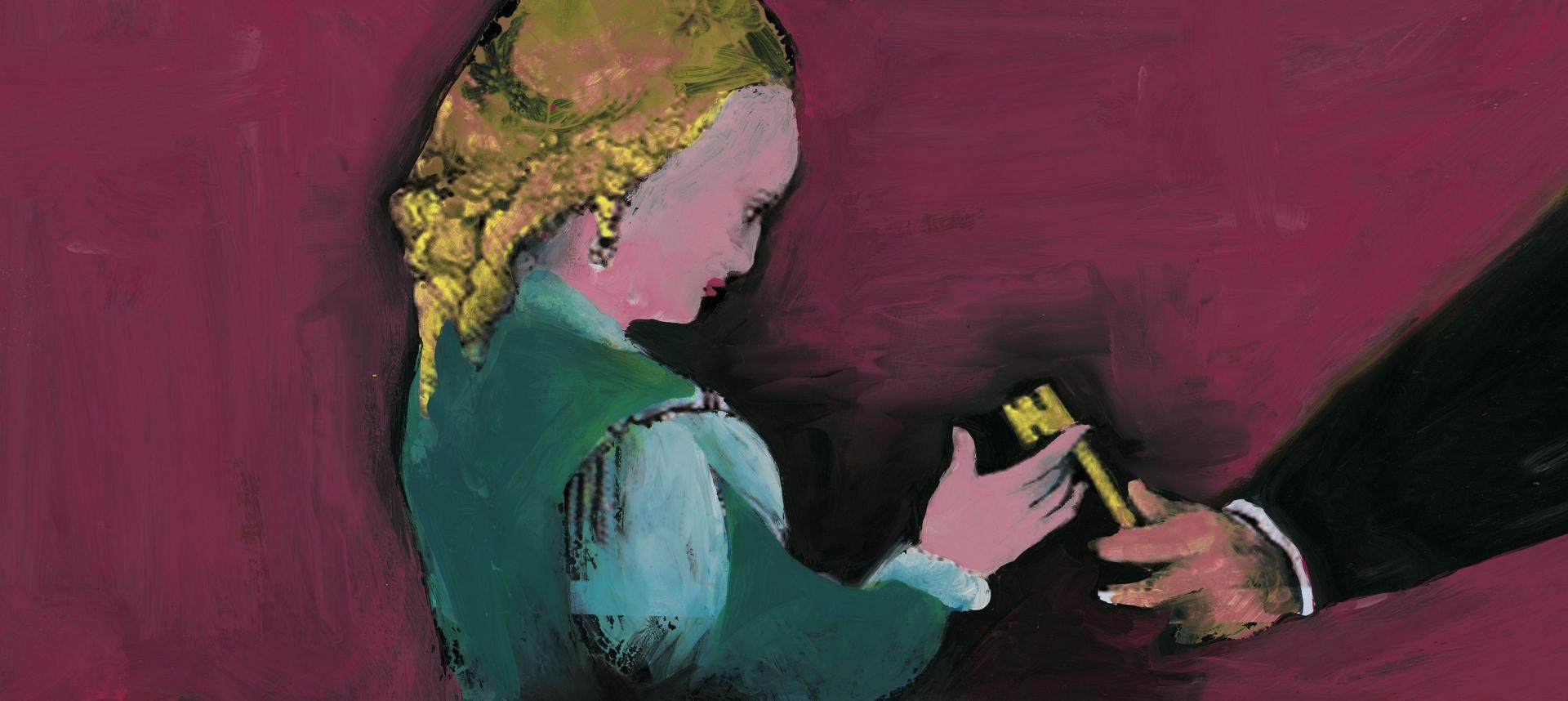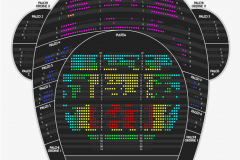Bluebeard's Castle and The Human Voice
March 2026 | ||||||
|---|---|---|---|---|---|---|
Mo | Tu | We | Th | Fr | Sa | Su |
Bluebeard’s Castle / La voix humaine | Opera
Béla Bartók / Francis Poulenc
Bluebeard’s Castle: 1 hour | Intermission: 30 minutes | La voix humaine: 45 minutes
Total duration: approximately 2 hours and 15 minutes
Bluebeard’s Castle
Bluebeard’s Castle, a one-act opera with a libretto by Béla Balázs, was composed by Bartók in 1911 but not performed until seven years later, on May 24, 1918, at the Budapest Opera House. In his libretto, Balázs revives the fairy-tale figure of the ruthless Bluebeard, setting him within a Symbolist framework inspired by Debussy and Maeterlinck’s Pelléas et Mélisande. The opera, divided into nine scenes, features only two characters: Bluebeard and his wife Judith, who express themselves through predominantly recitative-style singing based on pentatonic scales derived from Hungarian folk tradition. The action takes place in the prince’s medieval castle. A spoken prologue delivered by a bard introduces the first scene, depicting Judith’s determination to follow her husband into his gloomy and mysterious castle. Yet Judith wishes to uncover Bluebeard’s past and begins opening one by one the seven secret doors of the castle. To her horror, she discovers sinister rooms stained with blood — a key motif in the opera, symbolized by Bartók through the most dissonant of all intervals, the minor second. When she opens the seventh and final door, Judith fears she will find the corpses of Bluebeard’s previous wives, but instead she sees three living women, richly adorned — the women of morning, noon, and evening — who now exist only in Bluebeard’s memories. Judith, as the woman of the night, after being crowned and adorned with jewels by her husband, will join them forever in the seventh room, as the door closes and darkness falls once again over the castle.
La voix humaine (The Human Voice)
In 1930, Jean Cocteau premiered La voix humaine at the Comédie-Française — a drama depicting the solitude and despair of a woman abandoned by her lover. The idea of turning it into an opera was proposed to Francis Poulenc by Hervé Dugardin, then director of the Paris branch of Casa Ricordi. Having already set Cocteau’s texts to music, Poulenc gladly accepted the challenge of adapting a purely theatrical monologue to the needs of opera. His version of La voix humaine premiered at the Théâtre national de l’Opéra-Comique on February 6, 1959. The work features a single on-stage character, identified simply as Elle (“She”), who speaks on the telephone with her lover — a voice we never hear, though his replies are implied through her shifting tone. Engaged in a long telephone monologue, Elle is a demanding role that lies between spoken theatre and musical drama, requiring both vocal and dramatic mastery. In Poulenc’s La voix humaine, everything depends on the voice — on its chameleon-like ability to express every nuance of emotion: from apparent calm to doubt, misunderstanding, solitude, agitation, despair, and torment, culminating in the heartbroken final “je t’aime” that ends both the phone call and the opera with devastating finality.
Program and cast
Conductor and Music Director: Martin Rajna
Stage Director: Claus Guth
Set Design: Monika Pormale
Costumes: Anna Sofia Tuma
Lighting: Michael Bauer
Dramaturgy: Yvonne Gebauer
Orchestra of the Maggio Musicale Fiorentino
Bluebeard’s Castle
Bluebeard – Florian Boesch
Judith – Christel Loetzsch
La voix humaine (The Human Voice)
She – Anna Caterina Antonacci
New production in co-production with Tiroler Festspiele Erl
Cast updated as of June 30, 2025
Teatro del Maggio Florence State Opera Italy
Teatro del Maggio is in the centre, close to the old city walls, next to the historic Stazione Leopolda. The garden that welcomes visitors is Piazzale Vittorio Gui, named after the founder of the Stabile Orchestrale Fiorentina and the Maggio Musicale Fiorentino.
By train
Santa Maria Novella is Florence's main train station.
From there you can reach the theatre with a short walk (about 10-15 minutes) or by taking the tram (a stop) or a taxi.
By car
The Opera di Firenze is just outside the ZTL area.
It is possible to park near the Parco delle Cascine or for a fee in the Porta al Prato car park (Via Elio Gabbuggiani, 7) and in the Piazza Vittorio Veneto car park.
By bus
Lines C1, C2 and D (Leopolda stop);
Lines 17 and 23A-B (stop Via delle Carra);
Lines 17B-C, 22, 23N, 23 and 57 (Pierluigi da Palestrina stop);
Lines 29, 29B, 29BA, 29BC, 29D, 30A, 30B, 30AC, 35 and 35° (stop Leopolda - Porta al Prato; Capolinea).
By tram
Line T1 (stop Porta al Prato - Parco della musica).

 EN
EN DE
DE IT
IT FR
FR ES
ES RU
RU JP
JP RO
RO
 Seating plan
Seating plan 